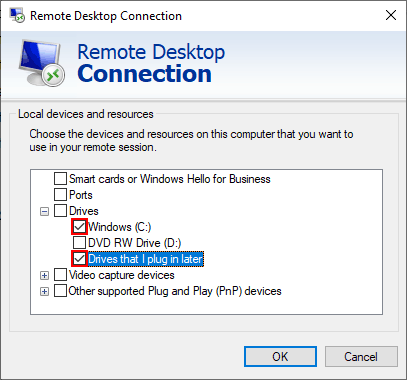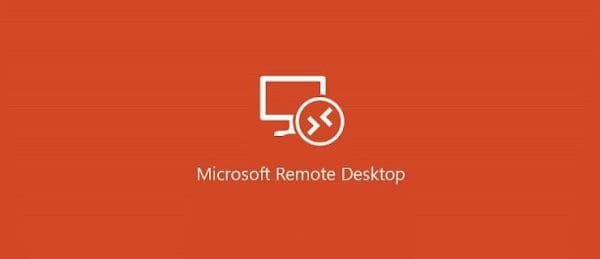
Windows Migration Assistant transfers your contacts, calendars, email accounts and more from a PC. It migrates this data to the appropriate places on your Mac. After migrating data to your Mac, authorise your computer to make iTunes Store purchases. It’s important to authorise this before you sync or play content you download from the iTunes Store.
If you're migrating from one Mac to another Mac, follow the steps to move your content to a new Mac.

Before you begin
When copying files from Mac to PC using Microsoft Remote Desktop I prefer to share a subfolder, not the entire drive. Here's how: In Remote Desktop on your Mac select your PC in the 'My Desktops' section. Click the 'Edit' button (pencil icon). In the popup click the 'Redirection' button (folder icon; see image below). Download the old version of Microsoft Remote Desktop for Mac. If you experience any compatibility issues with Microsoft Remote Desktop for Mac, consider downloading one of the older versions of Microsoft Remote Desktop. MacUpdate stores previous versions of Microsoft Remote Desktop for you since v. This article details the steps needed to successfully update the Microsoft Remote Desktop application on your Macintosh computer to version 10.Important Note:. The simplest way to accomplish this is to download and run the Right Networks Setup Wizard for Mac. It will assist in downloading the most up-to-date version of RDP, and will also. Next look for Microsoft Remote Desktop in the App Store to download the new application on your Mac running OS X Yosemite or higher. Once installed you can skip the first run experience. Microsoft Remote Desktop Connection for Mac 10.6.6 4 similar apps in Remote Access Google Chrome Beta for Windows 92.0.4472.38 5 similar apps in Browsers Opera 76.0.4017.107 14 similar apps in.
To prepare for a smooth migration:
- Make sure Windows is up to date. Migration Assistant works with Windows 7 and later.
- Make sure you know the name and password of an administrator account on your PC.
- Connect your Mac and PC to the same network, such as your home Wi-Fi network. Or connect an Ethernet cable between the ports on your Mac and PC to create a direct network connection. Some Mac models require an Ethernet adapter, such as the Belkin USB-C to Gigabit Ethernet Adapter or Apple Thunderbolt to Gigabit Ethernet Adapter.
- If you're using Microsoft OneDrive on your PC, follow Microsoft's instructions for uninstalling OneDrive before continuing. You can reinstall OneDrive after the migration has finished.
Then use the check disk (chkdsk) utility on your PC to make sure your Windows hard drive doesn’t have any issues:
- Right-click the Start button, then click Run.
- Type
cmdand press Enter. Command Prompt opens. - At the prompt, type
chkdskand press Enter. - If the utility reports that it has found problems, type the following, where drive is the letter that represents your Windows startup disk, such as D:
- Press Enter.
- At the prompt, type
Y, then restart your PC. - Repeat this process until the check disk utility is not reporting any issues. If the utility can't fix every issue it has found, you may need to get your PC serviced. Then migrate your data to your Mac.
Move your data
This section guides you through migration, post-migration and what to do if the steps don’t work for you.
How to move your information from a PC to your Mac

- On your PC, download and install the appropriate Windows Migration Assistant, based on the version of macOS on your Mac:
- Windows Migration Assistant for macOS Big Sur
- Windows Migration Assistant for macOS Mojave and macOS Catalina
- Windows Migration Assistant for macOS Sierra and High Sierra
- Windows Migration Assistant for OS X El Capitan or earlier
- Quit any open Windows apps.
- Open Windows Migration Assistant, then click Continue.
- Start up your Mac. Setup Assistant will open automatically the first time you turn on your Mac. If you’ve already set up your Mac, open Migration Assistant, which is in the Utilities folder of your Applications folder.
- On your Mac, follow the onscreen prompts until you get to the migration pane of the assistant. Select the option to transfer your information 'From a Windows PC', then click Continue.
- When prompted, enter an administrator name and password.
- Click Continue to close any other open apps.
- In the migration window on your Mac, select your PC from the list of available computers. Then wait for the PC to display the same passcode that your Mac is displaying.
- When both computers display the same passcode, click Continue on your PC and Mac.
- Your Mac will scan the drives on your PC to build a list of information to migrate. When the scan has finished, select the information you want to migrate to your Mac and click Continue. Find out about some of the types of data you can transfer.
You can watch the progress and estimated time remaining on both the PC and your Mac. They tell you when the migration has finished.
After you've moved your data
When the migration has finished, close Windows Migration Assistant on your PC. Then log in to the new user account on your Mac. The first time you log in to a user account migrated from your PC, you’ll be asked to set a password. You can use the same password that you used on your PC or create a new password.
After logging in to the user account that you've migrated, authorise your computer for iTunes Store purchases. It’s important to authorise this before you sync or play content downloaded from the iTunes Store.
Migrate Microsoft Remote Desktop Mac Version 10 Download
If you experience any issues when moving your data
- Quit all open apps on your PC, then try migrating your content again. For example, you can press Alt-Tab to choose an open application, then press Alt-F4 to quit it.
- If your PC doesn't appear in the Setup Assistant or Migration Assistant window on your Mac, make sure the computers are connected to the same network. You can create a network by connecting a single Ethernet cable between your Mac and PC. If that doesn't help, check for firewall software on your PC and turn it off. After the migration has finished, you can turn firewall software on again.
- If Migration Assistant doesn’t open on your PC, turn off any antivirus software on your PC. Then try to open Migration Assistant again. After the migration has finished. You can turn that software on again.
- If you still can't migrate your information successfully, you can use an external drive or file sharing to copy important data to your Mac manually.
What data can I transfer?
Migration Assistant lets you choose the data to move to your Mac. Here’s what is moved over for specific apps and data types:
Emails, contacts and calendar information
Email messages, email account settings, contacts and appointments are moved based on which version of Windows you're using and which accounts you have.
Outlook1
Data from 32-bit versions of Outlook in Windows 7 and later are moved as follows:
Migrate Microsoft Remote Desktop Mac Version 100
- People are moved to Contacts2
- Appointments are moved to the Calendar app
- IMAP and Exchange settings and messages are moved to the Mail app
- POP settings and messages are moved to Mail2
Windows Live Mail
Data from Windows Live Mail in Windows 7 and later are moved as follows:

- IMAP settings and messages are moved to Mail
- POP settings and messages are moved to Mail2

Windows Mail
Data from Windows Mail in Windows 7 and later (excluding Windows 8) are moved as follows:
- IMAP settings and messages are moved to Mail
- POP settings and messages are moved to Mail2
- People are moved to Contacts
Bookmarks
Bookmarks from Internet Explorer, Safari for Windows and Firefox are moved to Safari.
System settings
Language and location settings, and custom desktop pictures are moved to System Preferences. Your web browser homepage is moved to Safari preferences.
Pictures
Photos and other images are moved to your home folder. You can then add them to Photos, or open Photos and let it search your Mac for photos to import.
iTunes content
Migration Assistant transfers your iTunes media as follows: music is moved to the Apple Music app, videos are moved to the Apple TV app, podcasts are moved to the Apple Podcasts app and audiobooks are moved to the Apple Books app.
Other files
Migration Assistant also moves these files:
- Files from the top-level folder of the currently logged-in user’s home directory
- Non-system files located in the Windows or Program Files folders
- Top-level folders located on the Windows system disk and other attached disks
Migrate Microsoft Remote Desktop Mac Version 10.13
1. Migration Assistant doesn’t support 64-bit versions of Outlook. You can migrate Mail, Contacts or Calendars from Outlook 2013 or Outlook 2016 manually by signing in and entering the content on your Mac manually.
Migrate Microsoft Remote Desktop Mac Version 10.15
2. Migration Assistant only transfers the Mail or Contacts data that belongs to the logged-in Windows user. To transfer data from another user account, use Migration Assistant again while you’re logged in to another Windows account. Every time you migrate, your Mac creates a new user account.